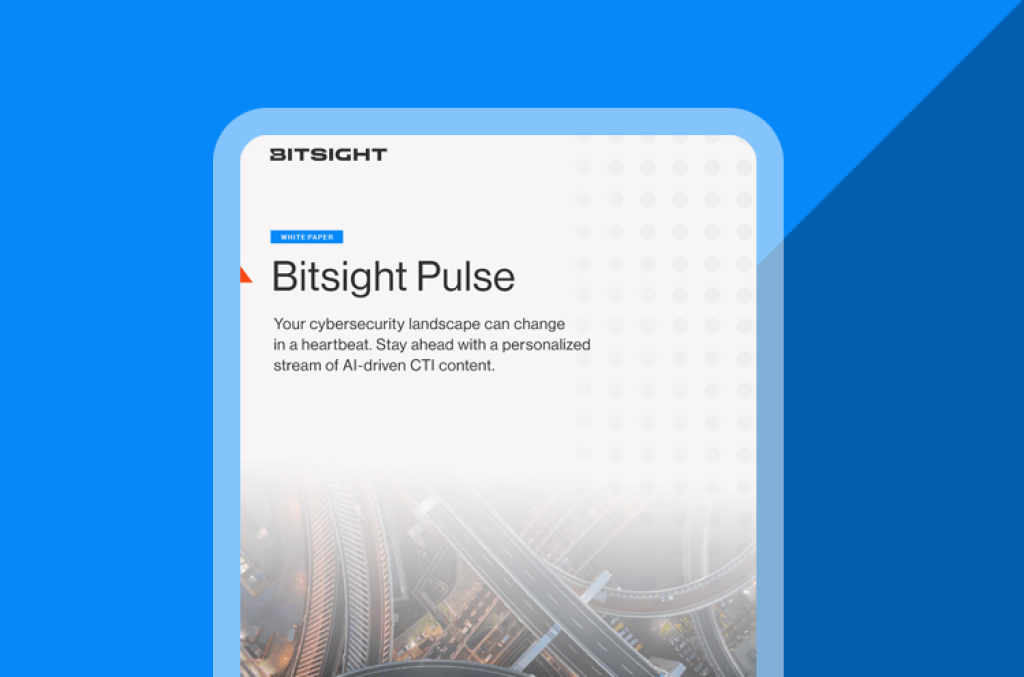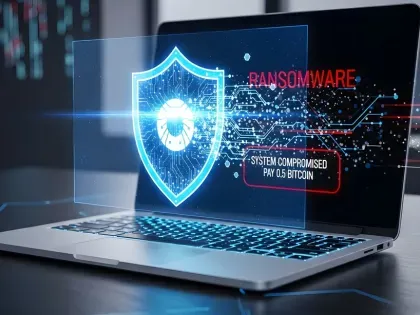Your cybersecurity landscape can change in a heartbeat. Stay ahead with a personalized stream of AI-driven CTI content.
5 Ways Cyber Threat Intelligence Boosts Cyber Risk Prioritization


As cyber risk leaders are called to balance the responsibility of managing risk in the face of both broader attack surfaces and increased regulatory and budgetary scrutiny, prioritization of work is everything. Cybersecurity resources are finite, while the vulnerabilities and threats just keep growing. The best way for modern security programs to keep up is by directing resources to the risks that matter most to their specific organizations.
This is a fundamental truth of cybersecurity, one that has driven Bitsight’s effort to provide customers with insights that contextualize traditional security telemetry with business risk indicators. And it’s why Bitsight is investing in deeper cyber threat intelligence (CTI) with our recent acquisition of Cybersixgill. CTI isn’t just a tactical tool for day-to-day security operations—it can also provide crucial, contextual understanding about how adversaries target, exploit, and impact organizations and, as a result, can help refine risk management priorities.
Combine threat context from CTI with business context from your own attack surface, and I believe cybersecurity teams can level up their cyber risk prioritization practices in five crucial areas.
1. Vulnerability management
Vulnerability management has been a notorious source of cybersecurity noise and information overload for decades. CISOs need a better way for their teams to prioritize which vulnerabilities to fix first than simple CVE ratings, which only offer clues as to how severe the flaw itself is, without taking into account how the underlying software is being used. One of the first steps of prioritizing vulnerability response is contextualizing which assets are involved and what those assets mean to the business. The highest value assets to critical business functions clearly deserve the swiftest mitigation.
But even with vulnerabilities whittled down in that fashion, how many of those are actually likely to be targeted by threat actors? According to Gartner, only about 6% of all known vulnerabilities will be exploited—but which 6% will that be? CTI can offer crucial data to focus on the likeliest flaws.
CTI refines the view of risk by adding contextual data about the tactics, techniques, and procedures (TTPs) observed by threats in the wild. This information can drive important context about the likelihood that a vulnerability will be exploited based on how it exists within specific software, assets, and business types. This is a particular specialty of Cybersixgill, which over the past several years has developed a proprietary Dynamic Vulnerability Exploit (DVE) that helps prioritize vulnerabilities based on risk context and likelihood of exploitation. This is a game-changer for risk leaders who want to focus on the flaws that pose the greatest risk specific to their infrastructure and their business.
2. Attack surface management
Vulnerability management is actually a subset of a broader challenge: understanding and securing the full attack surface. Attack surface management (ASM) helps organizations identify all assets, both known and unknown, and assess every potential vector attackers could exploit. This includes not just software vulnerabilities, but also misconfigurations, exposed credentials, geographic risk, and other forms of digital exposure.
The combination of Cybersixgill and Bitsight addresses this challenge head-on. Together, they not only map an organization’s internal asset landscape and its business context but also provide visibility into how those assets appear to external threat actors. This dual perspective, inside-out and outside-in, is critical to understanding which exposures matter.
CTI adds vital context by highlighting which exposures are actively being discussed, targeted, or monetized in criminal forums, such as the dark web. That intelligence gives security teams a powerful early warning system and enables faster, more informed action. Even better, this threat data can be seamlessly integrated into existing security stacks, making it actionable across the organization, from the SOC to the C-suite.
3. Credential monitoring
Credential theft and identity-focused threats are among the most damaging cyber risks facing businesses today, yet traditional security controls often fail to detect when credentials are being misused. CTI provides cyber risk teams with a valuable intelligence source to identify credentials within their organization that pose the greatest risk of exploitation by attackers. Organizations that effectively leverage CTI can significantly strengthen their ability to protect both employee and customer information.
CTI analysis tracks where leaked credentials are posted on the dark web and examines how these credentials are being monetized and weaponized by adversaries. CTI can then layer that information over an organization’s existing credentials inventory to provide a high-fidelity view of relevant credentials they’re charged with protecting, currently being peddled by the threat actors. This provides valuable insights to help teams quickly identify at-risk identities and the systems they connect to that could potentially already be compromised. This approach enables security teams to proactively prioritize remediation of compromised credentials and vulnerable systems based on real-world threat activity.
4. Third-party risk assessment
CTI also provides an added perspective for third-party risk assessment, particularly around ransomware-related risks. Ransomware poses a clear and present danger not only to internal assets owned by the organization but also to systems owned and run by third parties. When an important partner or vendor goes offline due to ransomware, that disruption ripples out into your organization and your attack surface.
CTI can offer valuable and timely information about when a supply chain and relevant third parties are being targeted or researched by prolific ransomware groups. Threat intelligence can offer advanced monitoring of the data leak sites where ransomware groups post their victims’ data. By taking information from those sites and the victims involved and then marrying that with third-party risk management (TPRM) monitoring, security programs can bring to the surface actionable information that could clue them into potential attacks before they disrupt the business. This speeds reaction time and boosts TPRM.
5. Real-time monitoring
CISOs and other c-level risk managers depend on real-time data, but they’re also burdened by it. They are called to sift through so many different kinds of intelligence, risk portals, risk matrices, alerts, and so on. The problem is that for too long, so much of that information has existed separately and without enough context. The true differentiation of bringing CTI from Cybersixgill together with Bitsight data sets is that it can tie together asset and business context with real-time information about what’s happening in any given threat domain, whether it’s malware trends, ransomware, breaches, or threats operating within specific geographies or industries.
We’ll be adding an even bigger boost to this consolidation with a new product called Bitsight Pulse, which provides a customized feed of threat intelligence that uses LLM technology to make it possible to refine intelligence channels based on factors 100% relevant to the organization, the stakeholder, and their risk focus. Powered by Bitsight IQ, this solution gives you structured, contextualized CTI in a single screen—so you can stay ahead of the headlines and act fast on what is relevant to your organization.
Dive deeper
I recently sat down with Dor Gosher, Director of CTI Product Management here at Bitsight, to discuss the power of CTI combined with Bitsight intelligence. He not only helps drive how Bitsight products can leverage CTI, but he’s a technical practitioner who thinks like an attacker and incorporates those insights into our CTI product roadmap.
To learn more about his insights and to dive deeper into the five ways CTI can drive long-term impact on your security strategy, check out our recent webinar, “Unlocking the Power of Cyber Threat Intelligence (CTI): A Practical Guide with Bitsight.”



